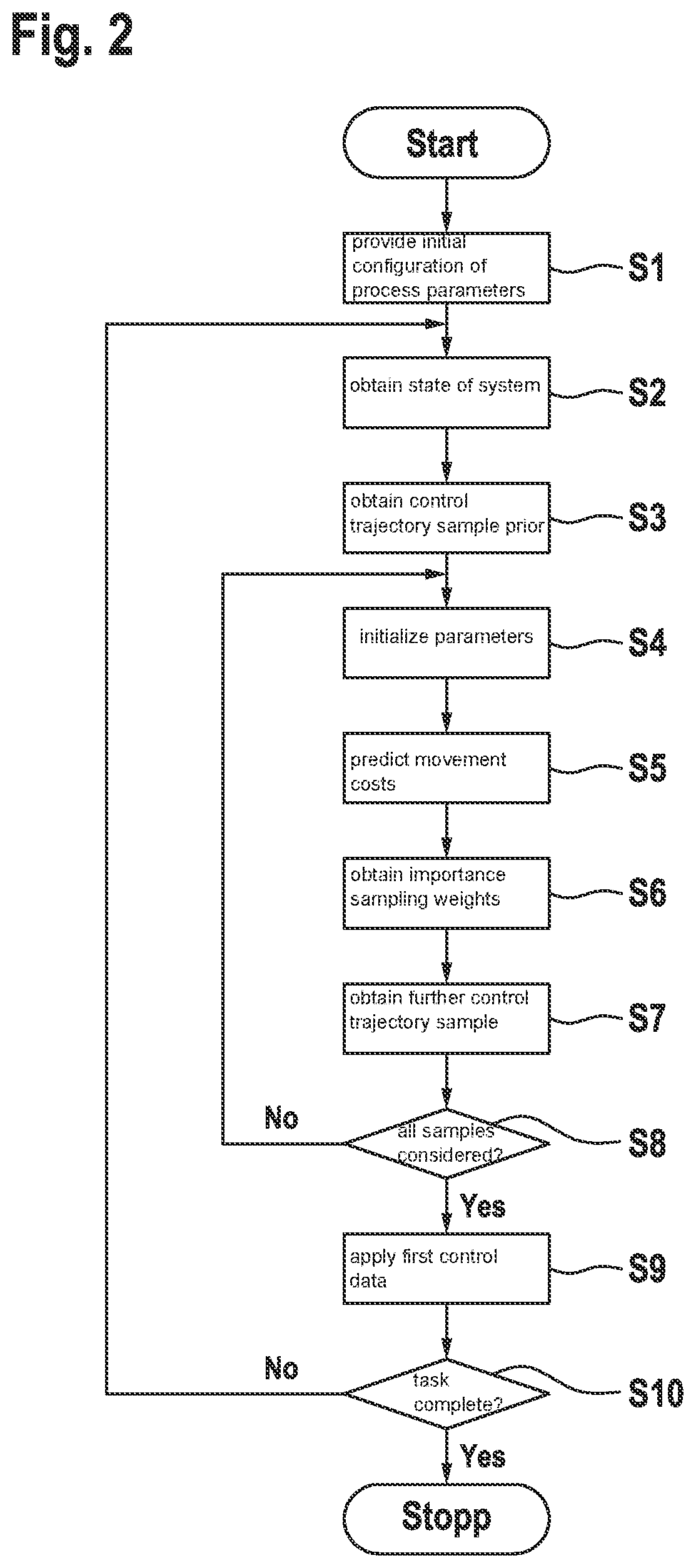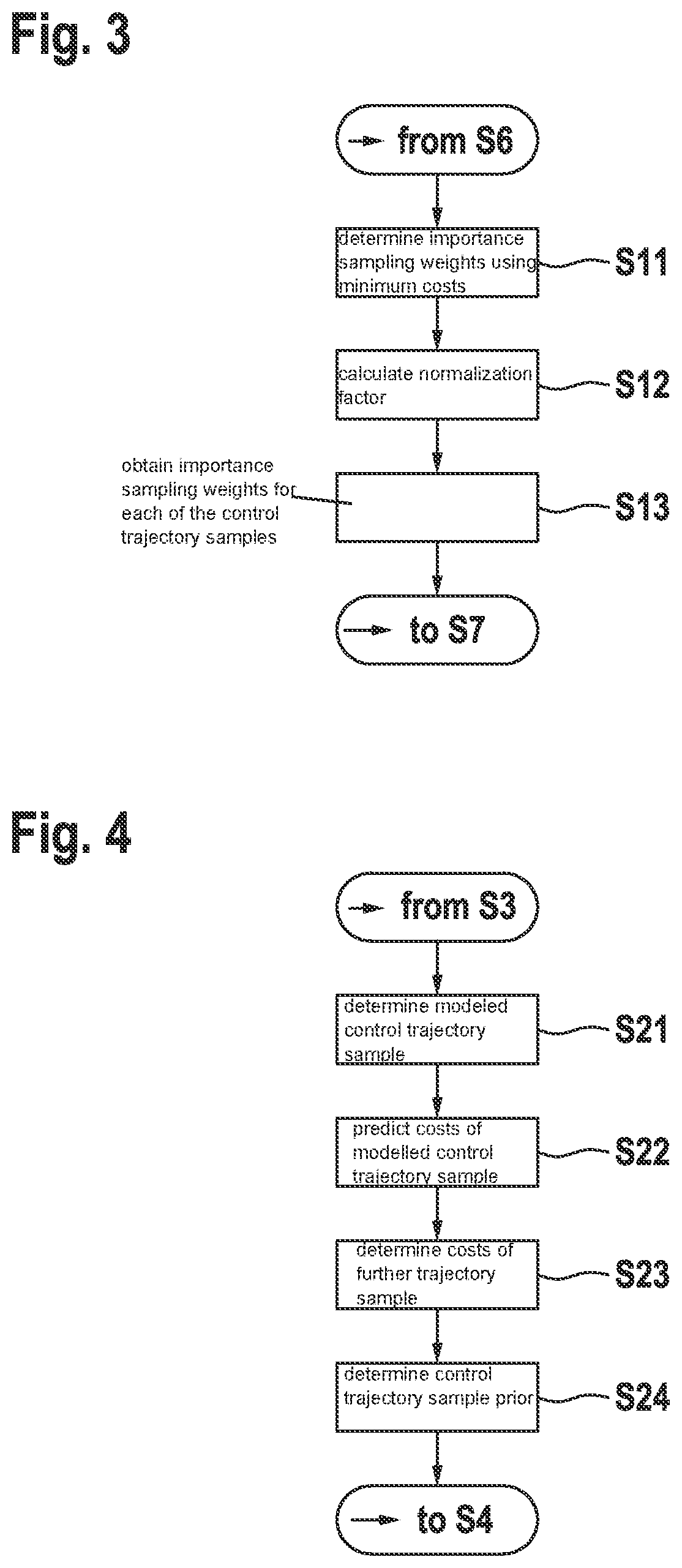Method and device for socially aware model predictive control of a robotic device using machine learning
a robotic device and socially aware technology, applied in adaptive control, navigation instruments, instruments, etc., can solve the problems of poor convergence to optimal control sequence, cost of trajectory may be related to expense, and standard it-mpc is inappropriate for mobile robot navigation in crowded environments, etc., to improve the information theoretic model predictive control techniqu
- Summary
- Abstract
- Description
- Claims
- Application Information
AI Technical Summary
Benefits of technology
Problems solved by technology
Method used
Image
Examples
Embodiment Construction
[0035]FIG. 1 shows a system of a robotic device 1 as a mobile robot having a task to move through / within an environment E from position A to position B along a planned trajectory. In the environment E dynamic objects 2, 3, 4 may move performing their own tasks. The dynamic objects 2, 3, 4 may be further mobile robots or individuals each showing a kind of intelligent task driven behavior. The intelligent behavior of the dynamic objects 2, 3, 4 may follow a policy considering actions of the robotic device 1 and / or other dynamic objects 2, 3, 4.
[0036]The mobile robot may be an autonomous cleaning robot, an autonomous lawn mower, an autonomous service or care robot or the like. In other embodiments, the robotic device may be a robot with a manipulator, such as a robot arm, wherein the the manipulating device, such as a robot gripper, shall follow a planned trajectory.
[0037]The robotic device 1 may have a configuration as it is schematically shown in FIG. 1. The robotic device 1 has a co...
PUM
 Login to View More
Login to View More Abstract
Description
Claims
Application Information
 Login to View More
Login to View More - R&D
- Intellectual Property
- Life Sciences
- Materials
- Tech Scout
- Unparalleled Data Quality
- Higher Quality Content
- 60% Fewer Hallucinations
Browse by: Latest US Patents, China's latest patents, Technical Efficacy Thesaurus, Application Domain, Technology Topic, Popular Technical Reports.
© 2025 PatSnap. All rights reserved.Legal|Privacy policy|Modern Slavery Act Transparency Statement|Sitemap|About US| Contact US: help@patsnap.com



